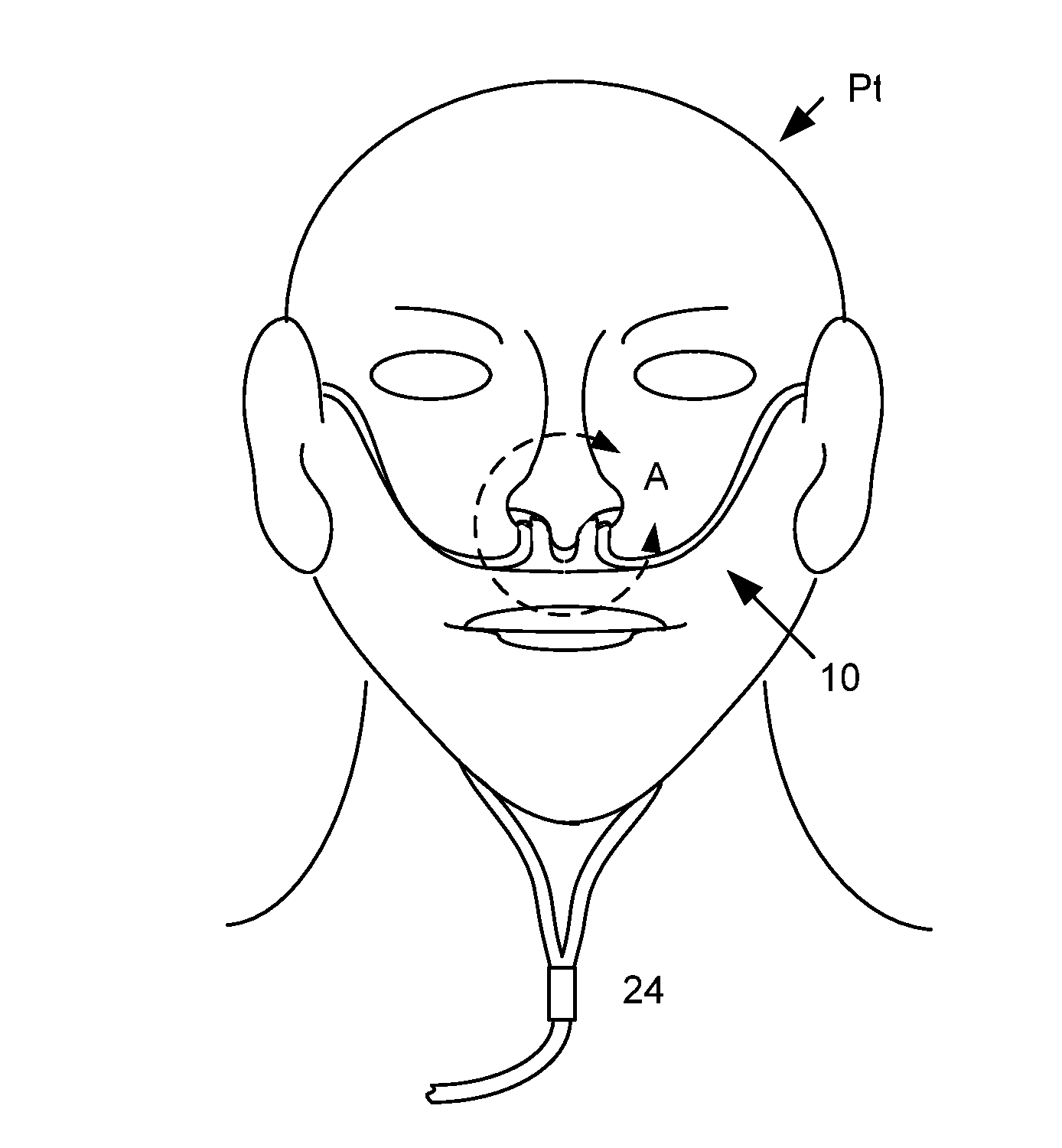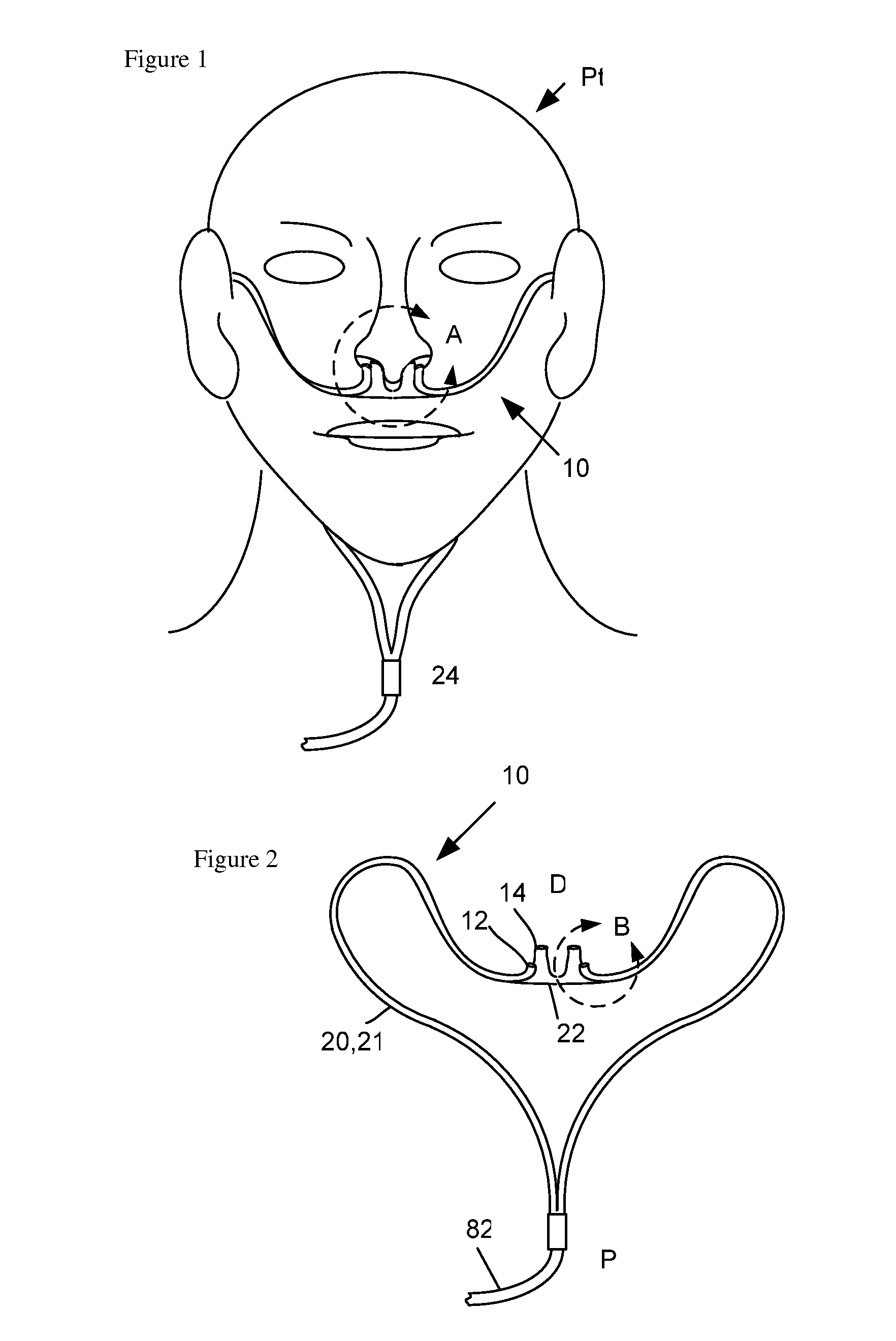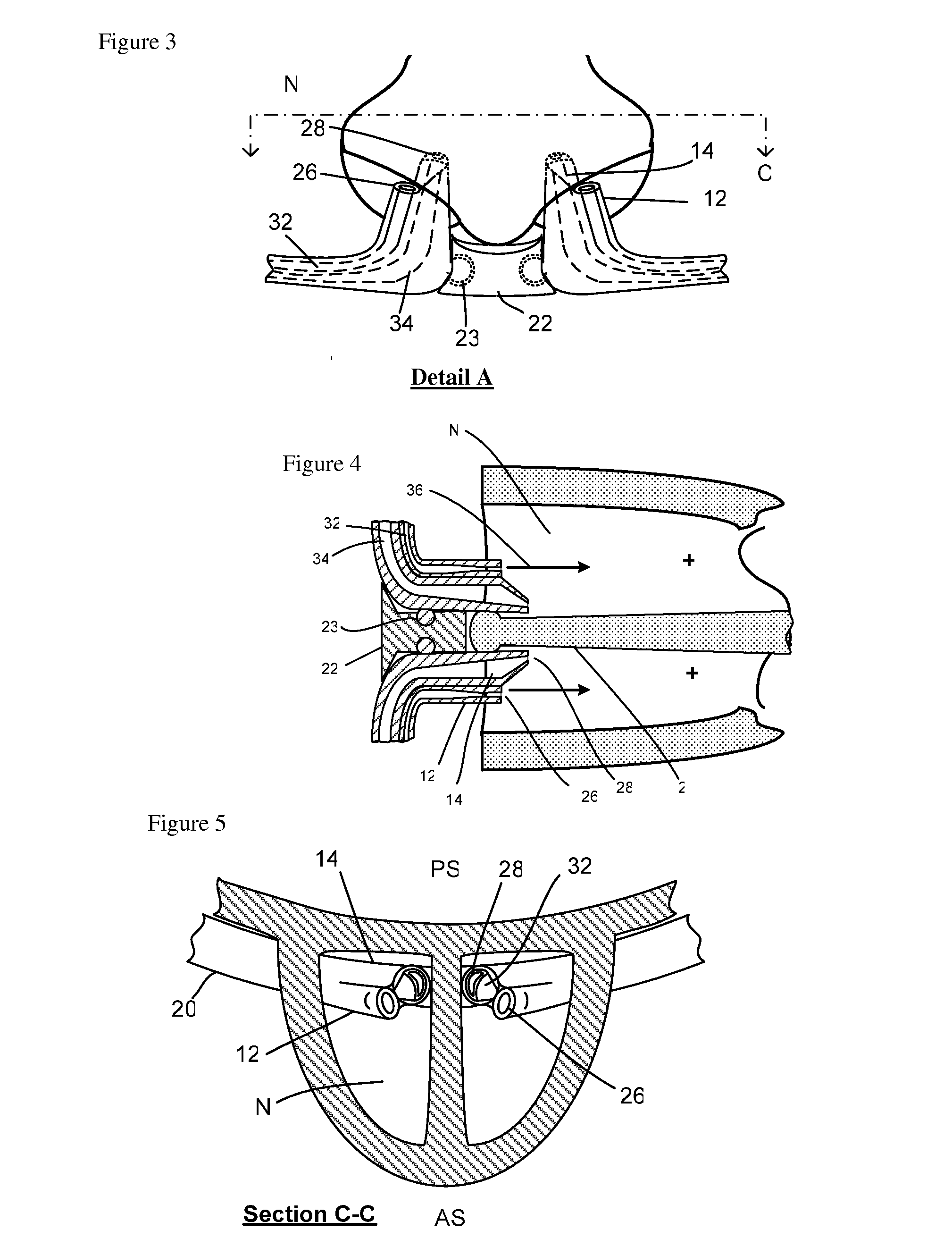Nasal Ventilation Cannula System and Methods
a technology of nasal ventilation and cannula, which is applied in the field of nasal ventilation cannula system and methods, can solve the problems that the nasal ventilation cannula does not enhance ventilation, and achieve the effects of reducing the comfort of the gas flow, preventing the occlusion of the tube, and lessening the pressure generation
- Summary
- Abstract
- Description
- Claims
- Application Information
AI Technical Summary
Benefits of technology
Problems solved by technology
Method used
Image
Examples
Embodiment Construction
[0063]FIG. 1 describes the nasal ventilation cannula 10 being worn by a user Pt, and a Y connection 24. FIG. 2 shows an isometric view of the nasal ventilation cannula assembly 10 with gas delivery tubing 20 and breath sensing tubing 21 and interconnecting manifold 22, with a proximal end P with gas delivery circuit 82 which connects to a gas flow source and a distal end D which delivers gas flow to a patient's nasal airway via a ventilation gas delivery nozzle 12. User breathing is sensed via a sensing tube 14. FIG. 3 describes a detailed partial hidden live view of the distal end of the ventilation cannula 10 at detail A of FIG. 1. The gas delivery tube and breath sensing tubes are shown, as well as an interconnecting manifold 22 connected to the left and right sides. The interconnecting manifold can be adjustable or removable for example with connectors 23 in order to set the distance between the sensing tubes so that the sensing tubes hug the medial wall of the nostril N. The br...
PUM
 Login to View More
Login to View More Abstract
Description
Claims
Application Information
 Login to View More
Login to View More - R&D
- Intellectual Property
- Life Sciences
- Materials
- Tech Scout
- Unparalleled Data Quality
- Higher Quality Content
- 60% Fewer Hallucinations
Browse by: Latest US Patents, China's latest patents, Technical Efficacy Thesaurus, Application Domain, Technology Topic, Popular Technical Reports.
© 2025 PatSnap. All rights reserved.Legal|Privacy policy|Modern Slavery Act Transparency Statement|Sitemap|About US| Contact US: help@patsnap.com



